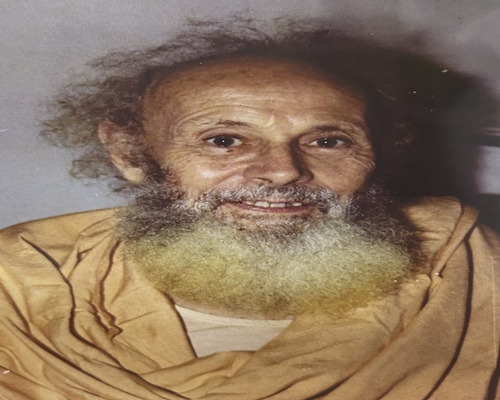
As I put my pen to paper, our whole nation is abuzz with the frenzy of Ram Mandir and
its consecration. This past December, 25 years ago, Swami Abhishiktananda (Henri Le
Saux) a French Benedictine who had dedicated himself to the experience of God through
the Upanishads, breathed his last, leaving us legacy of ‘Quaerere Deum’, the quest for
God. Abhishiktananda’s priesthood had lost none of its power to inspire any soul who,
like him, is moved by a deep desire to meet the real heart of India and transmit to it the
newness of Christ.
His Life
He entered the minor seminary in 1921, pursued his major seminary studies in order to
become a diocesan priest. But when one of his friends who was studying to be a
Benedictine monk died, he had the spontaneous urge to take up that unfinished
vocation. He entered the Benedictine abbey of Kergonan near the Atlantic Ocean. He did
not hide his motivation behind joining the Benedictines to the Novice Master. He told
him, “What has drawn me from the beginning, and what still leads me on, is the hope of
finding the presence of God more immediately than anywhere else. I have a very
ambitious spirit – and this is permissible, is it not? when it is a matter of seeking God –
and I hope I shall not be disappointed.”
Abhishiktananda’s priesthood was fully inscribed within the ‘quaerere Deum’ about
which Pope Benedict XVI also declared: ‘Quaerere Deum: because these monks were
/are Christian, this was not an expedition into a trackless wilderness, a search leading
them into total darkness. God himself had provided signposts, indeed He had marked
out a path which was theirs to find and to follow. This path was His Word, which had
been disclosed to men in the books of the sacred Scriptures.
After spending 19 years in the abbey (which were fundamental for him in more ways
than one) Henri Le Saux, In 1948 travelled to South India and joined Jules Monchanin
who had been living in Trichy, and together they founded Shantivanam Ashram in 1950.
Monchanin took the name Paramarubyananda in honour of the Holy Spirit , and Le Saux
became Abhishiktananda referring to Christ the Anointed of the Father. The intention of
these two French priests was that their little ashram should serve the Church in India,
already so rich with educational and medical institutions, by revealing its contemplative
side, just as Mary sat at the feet of the Lord while her sister Martha was busy serving at
table (Lk 10:38-42). It seemed to them crucial that Hinduism should discover that the
Church possessed a long contemplative and monastic tradition.
His Ministry
“During the twenty-five years between his arrival in 1948 and his death in 1973, India
wrought a profound transformation on Abhishiktananda’s vision of his priestly
ministry. His meeting of Eastern Culture deepened the monastic dimension of his
vocation, especially in the ‘quaerere Deum’, the quest of God so ardently tangible in
many Hindu Monks – as well as the ministry of silence which the Benedictine monk
witnessed in some silent hermits (muni) hidden in the heart of the Himalayas. Living
daily alongside the Hindu believers refined his perception of his vocation, dilating it into
unexpected dimensions through new experiences as described in his 1971 private
journal: “[…] but a ministry that extends beyond its so-called ecclesial manifestations. A
ministry at the service of the mystery, the revelation of the Mystery. Revelation to
human beings of their own personal mystery and also of the total mystery, the mystery
in itself; what is called God’
After meeting with many Hindu gurus and sannyasins, he was empowered to write that
for a Christian “the guru or spiritual master is only the one who has encountered in the
depths of his soul the ‘true living God’ of whom the Bible speaks on every page, and
from thenceforth has become forever branded with the mark of that encounter.’
Emmanual Vattakuzhy in his doctoral thesis, “Indian Christian Sannyasa and Swami
Abhishiktananda”, says “Swamiji’s meagre diet, the change from his own native culture
and climate, his strict self-discipline and ascetical practices, difficult journeys and
incessant pilgrimages and sometimes harsh and uncharitable criticisms from his
opponents, progressively took the toll of his health.”
Abhishiktananda was ahead of the Second Vatican Council, and after the Council, he
became the driving force behind Indian Church’s awakening to God and to the spiritual
riches of India. Sister Marie-Theophane who took care of him in the final hours of his
earthly life, writes, “His mission was to be what he taught. He wanted his life to
demonstrate what is essential: awakening to God.”